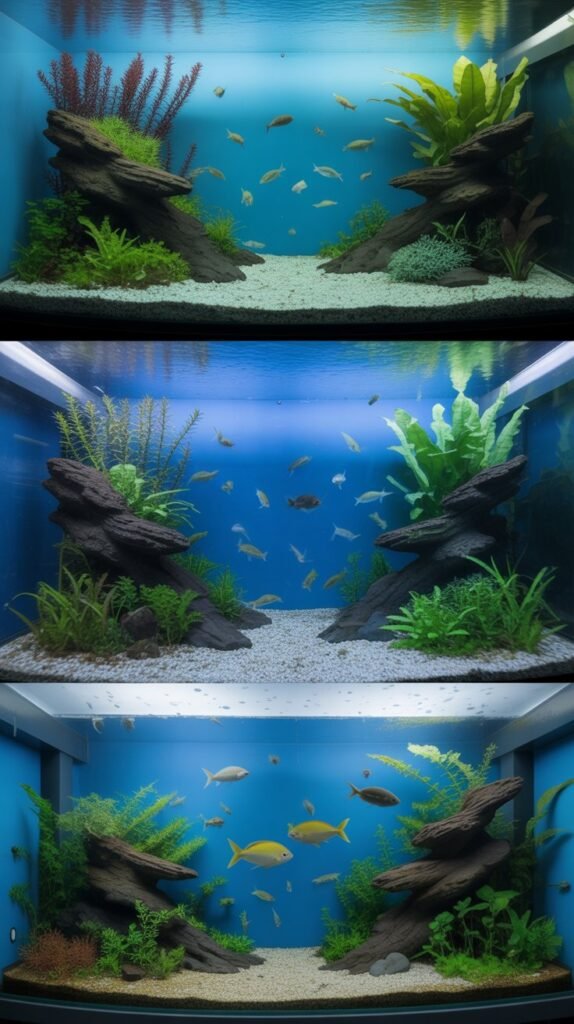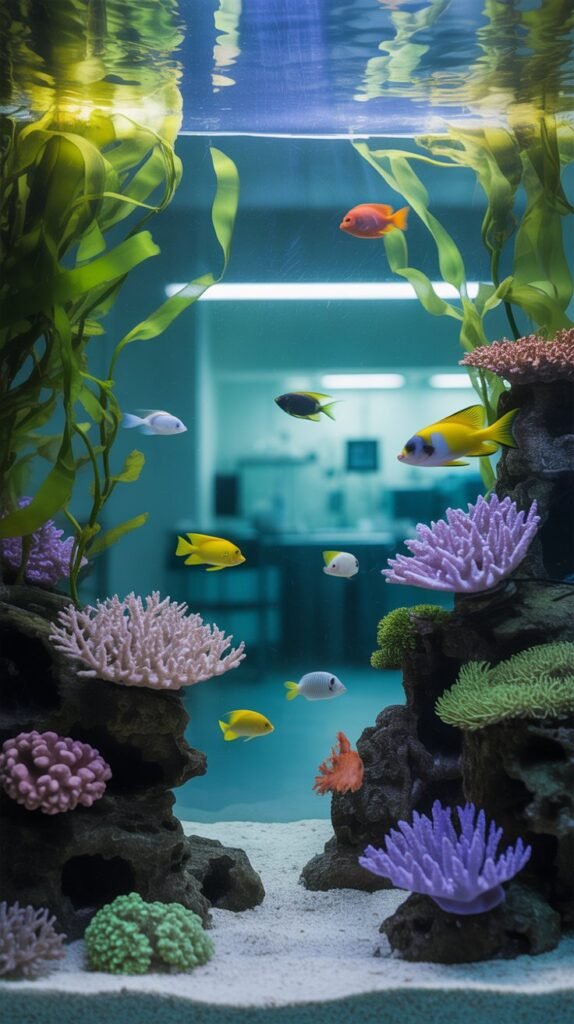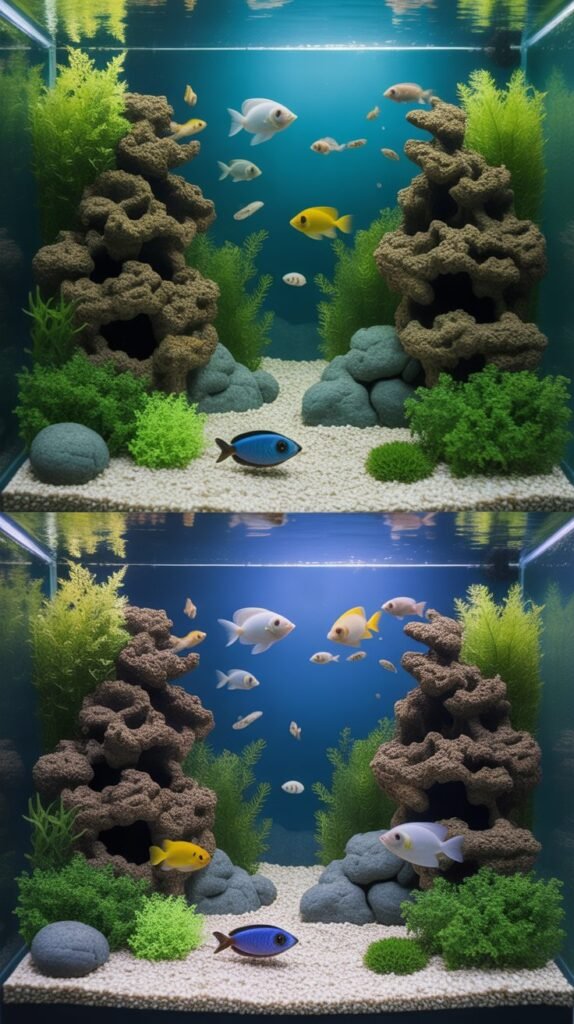Fishkeeping is a rewarding and relaxing hobby, but it comes with its share of responsibilities. One of the most important yet often overlooked aspects of aquarium care is having an aquarium hospital tank. Just as humans need hospitals to recover from illness or injury, fish too benefit from a separate, controlled environment when they’re sick, injured, or stressed. An aquarium hospital tank provides the perfect space for treatment, recovery, and observation without disturbing the main aquarium environment.
In this detailed guide, we will cover everything you need to know about aquarium hospital tanks, including their purpose, setup, equipment, maintenance, and best practices to ensure your fish live healthier, longer lives.
What is an Aquarium Hospital Tank?
An aquarium hospital tank is a separate aquarium, usually smaller than the main display tank, designed specifically for isolating and treating sick or injured fish. Unlike quarantine tanks (which are mainly used for new arrivals to prevent introducing disease into the main tank), a hospital tank focuses on treatment and recovery.

The primary goal is to create a stress-free, easily controllable environment where medications can be administered effectively without harming the rest of the aquarium’s inhabitants or beneficial bacteria colonies.
Why Do You Need an Aquarium Hospital Tank?
Many beginner aquarists wonder if they really need a hospital tank. The truth is, every serious aquarist should have one. Here’s why:
- Safe Treatment for Sick Fish
Treating fish in a separate hospital tank allows you to medicate only the affected fish, reducing chemical exposure for healthy tankmates. - Protects Beneficial Bacteria in Main Tank
Many aquarium medications kill not only parasites and harmful bacteria but also beneficial bacteria. A hospital tank prevents damage to your display aquarium’s biofilter. - Stress-Free Recovery
Sick or injured fish are often bullied by healthy tankmates. Isolating them reduces stress, giving them a better chance at survival. - Cost-Effective Medication
Dosing medications in a smaller hospital tank is more affordable than treating an entire large aquarium. - Prevents Spread of Disease
Contagious diseases like Ich or fin rot can spread rapidly. A hospital tank helps contain and treat infections before they wipe out the whole aquarium.
Choosing the Right Size for an Aquarium Hospital Tank
The size of your hospital tank depends on the type and number of fish you keep. Some general guidelines include:
- Small fish (guppies, tetras, bettas): 5–10 gallons
- Medium fish (cichlids, angelfish, gouramis): 10–20 gallons
- Large fish (oscars, koi, goldfish): 20–40 gallons or larger
It’s important to remember that a hospital tank doesn’t need to look fancy. Unlike display tanks, it should be simple and functional.
Essential Equipment for an Aquarium Hospital Tank

To set up an effective hospital tank, you’ll need some basic equipment:
- Aquarium Tank – A bare-bottom glass or acrylic tank works best for easy cleaning.
- Heater – Many diseases thrive in cooler water, so maintaining stable temperatures (75–82°F depending on species) is crucial.
- Filter – A sponge filter is ideal, as it provides biological filtration and gentle water flow. Avoid carbon filters because they absorb medications.
- Air Pump and Air Stone – Helps oxygenate the water, especially during treatments that reduce oxygen levels.
- Thermometer – To monitor water temperature consistently.
- Hiding Spots – Simple PVC pipes or clay pots can provide shelter without interfering with cleaning.
- Lighting – Keep lighting minimal, as sick fish are less stressed in dim environments.
- Lid or Cover – Prevents fish from jumping out, especially stressed species.
Setting Up an Aquarium Hospital Tank
Unlike a display tank, the hospital tank setup is straightforward:
- Tank Placement – Choose a quiet, low-traffic area to reduce stress.
- Water Preparation – Use dechlorinated water and match the temperature and pH of the main tank.
- Bare Bottom – Avoid gravel or sand for easier cleaning and to prevent debris buildup.
- Simple Decorations – Provide minimal hiding spaces using easily sterilized items.
- Cycle the Tank – Ideally, use a pre-seeded sponge filter from your main tank to establish beneficial bacteria quickly.
- Test Water Parameters – Ensure ammonia, nitrite, and nitrate levels are within safe ranges before adding sick fish.
Using an Aquarium Hospital Tank: Step-by-Step
Here’s how to use your hospital tank effectively:
- Identify the Sick Fish
Look for symptoms such as clamped fins, unusual spots, bloating, or erratic swimming. - Move the Fish
Gently net the sick fish and transfer it to the hospital tank. Avoid cross-contaminating water between tanks. - Diagnose the Problem
Research symptoms carefully before medicating. Misdiagnosis can do more harm than good. - Administer Medication
Follow medication instructions precisely. Overdosing can kill fish, while underdosing may not cure the illness. - Monitor Water Quality
Perform regular water tests, as medications can affect biological filtration. - Observe Behavior
Watch the fish daily for signs of improvement or worsening symptoms. - Post-Treatment Recovery
Keep the fish in the hospital tank for a few days after symptoms disappear to ensure full recovery.
Common Diseases Treated in Aquarium Hospital Tanks

Some of the most common fish diseases and conditions treated in hospital tanks include:
- Ich (White Spot Disease) – Treated with temperature increase and anti-parasitic medication.
- Fin Rot – Caused by bacterial infection; treated with antibiotics.
- Fungal Infections – Treated with antifungal medications.
- Velvet Disease – Requires copper-based treatments.
- Parasites (Flukes, Worms) – Treated with deworming medications.
- Swim Bladder Issues – Managed with fasting and specific diets.
- Injuries from Fighting – Healed with clean water and stress reduction.
Maintenance of an Aquarium Hospital Tank
Proper maintenance ensures the hospital tank remains effective:
- Daily Monitoring – Check fish behavior, appetite, and water parameters.
- Water Changes – Perform frequent small water changes to remove waste and medication residues.
- Sterilization Between Uses – After treatment, disinfect the hospital tank with diluted bleach, rinse thoroughly, and let it dry completely.
- Storage – When not in use, keep the hospital tank clean and ready for emergencies.
Differences Between a Quarantine Tank and a Hospital Tank
While the terms are often used interchangeably, they serve different purposes:
- Quarantine Tank – Used for new fish before adding them to the main tank to prevent disease introduction.
- Hospital Tank – Used for sick or injured fish already in your aquarium.
Some aquarists use one tank for both purposes, but ideally, keep them separate to avoid cross-contamination.
Tips for Success with Aquarium Hospital Tanks
- Always keep a hospital tank ready for emergencies.
- Use only necessary equipment – simplicity is key.
- Avoid overfeeding, as leftover food can pollute water quickly.
- Research diseases carefully before treating.
- Never use carbon filters when medicating, as they remove medication from water.
- After treatment, disinfect everything before reusing.
Conclusion
An aquarium hospital tank is an essential tool for any fishkeeper who wants to provide the best possible care for their aquatic pets. It allows for safe, effective treatment while protecting the health of the main aquarium. By setting up and maintaining a proper hospital tank, you’ll be better prepared to handle emergencies, prevent disease spread, and ensure the long-term health of your fish.
Fishkeeping isn’t just about creating a beautiful display; it’s also about responsibility and care. A hospital tank is one of the best investments you can make in your aquarium journey.
FAQs about Aquarium Hospital Tanks
Q1. Can I use my main tank as a hospital tank?
No, it’s not recommended. Treating the main tank with medications can harm beneficial bacteria and stress healthy fish.
Q2. How long should a fish stay in a hospital tank?
Typically, until the illness is fully cured and the fish has recovered—usually 1–3 weeks depending on the condition.
Q3. Do I need to cycle a hospital tank?
Yes, cycling helps establish beneficial bacteria, but since many treatments affect bacteria, frequent water changes are equally important.
Q4. Can I reuse a hospital tank after treating a sick fish?
Yes, but it must be thoroughly cleaned and sterilized before reuse to avoid spreading pathogens.
Q5. Should a hospital tank have substrate and decorations?
No, a bare-bottom tank with minimal, easy-to-clean hiding spots is best for easy maintenance and observation.
Q6. Can I use a quarantine tank as a hospital tank?
Yes, but ideally, you should have separate tanks for each purpose to prevent cross-contamination.
Q7. How do I disinfect a hospital tank after use?
Use a diluted bleach solution (1 part bleach to 9 parts water), rinse thoroughly, and let it dry completely before reuse.

